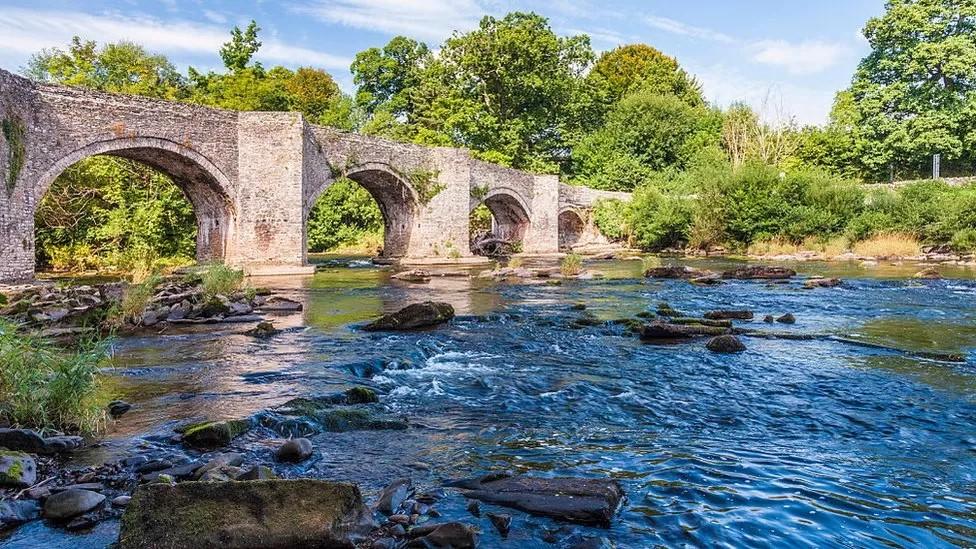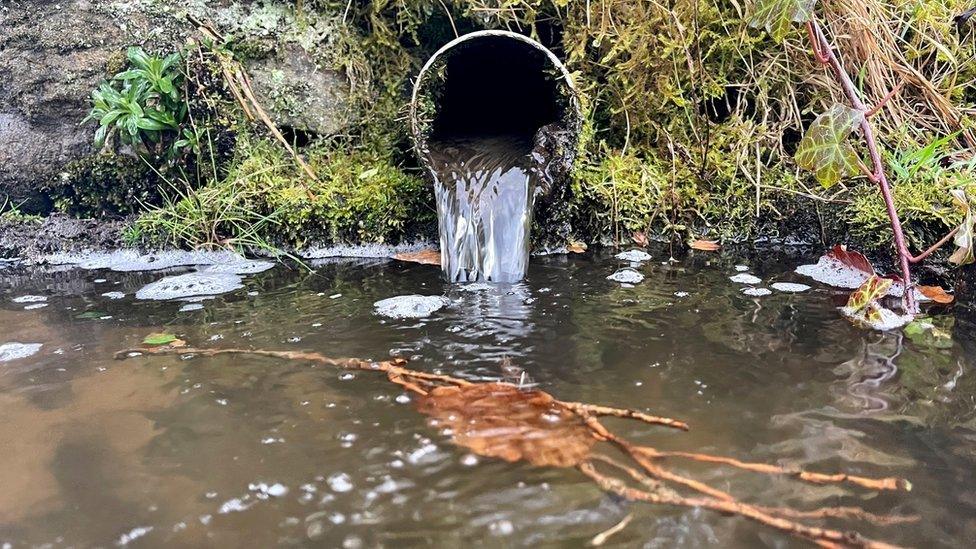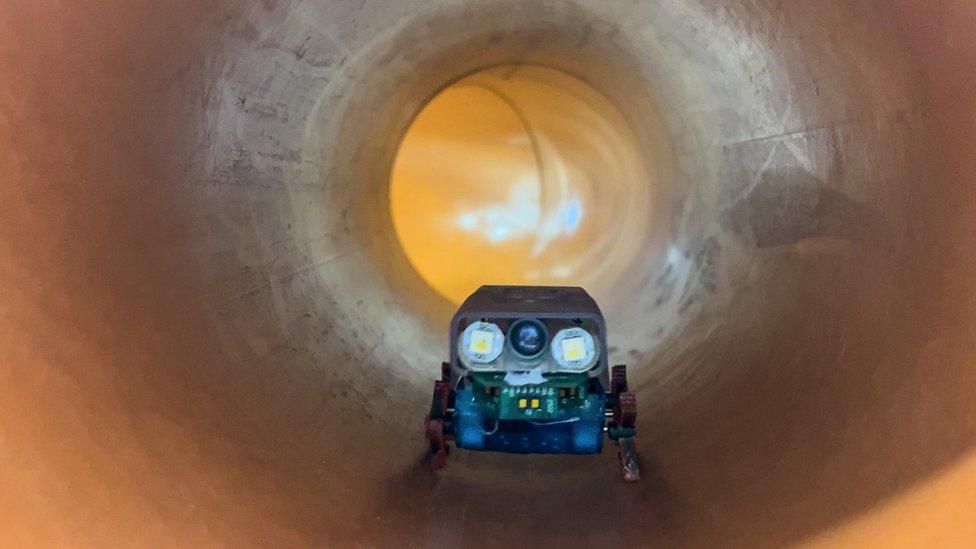Welsh Water: Sewage spills rise blamed on wet weather
- Published

Natural Resources Wales says it is reviewing regulations to ensure it can drive water company investment and reduce spills
Welsh Water released sewage into rivers, lakes and the sea around Wales for more than 916,000 hours last year, latest data shows.
The water company recorded 105,943 spills in 2023, 93% of which were ranked "significant".
The 68% rise in hours of spills compared with last year could be "directly linked to the wet weather", Welsh Water said.
It accounts for about 20% of all hours of discharges across Wales and England.
Water companies have to report annual storm overflows and on Wednesday, those in England reported that sewage spills had more than doubled.
Water UK, the industry body for sewerage companies, said it was "unacceptable" but the record levels were due to heavy rain.
Welsh Water reports its figures to Natural Resources Wales (NRW), which said it would "continue to push" for improvements in performance and for a reduction in spills.
The campaign group River Action called the scale of the discharges by water companies "a final indictment of a failing industry".
In Welsh Water's operational area, there was a 37% rise in the number of spills compared with 2022.
This was a smaller rise than across England, where spills rose by 54%. In Scotland, discharges rose by 10%.
In its report on the latest figures, Welsh Water said storm overflows were designed to operate when too much rainwater entered the system so that homes and communities were protected from internal wastewater flooding.
Met Office data, external shows rainfall was 11% above average in Wales in 2023.
Welsh Water said "2023 was one of the wettest on record with 10 named storms and eight months seeing above-average rainfall - March for example was the wettest for 40 years in Wales and England with 200% of its average rainfall".
"As a country on the western side of the UK, we have some of the highest levels of rainfall and are seeing an increase in severe events linked to climate change."
Annual spills in hours in Wales, 2023
5,811.75 hrsLlanbrynmair treatment works, into River Laen, Powys
5,755.5 hrs Pwllmeyric, Mounton Brook, Monmouthshire
5,344 hrsStation Row, Pontyrhyl, Bridgend - River Garw to confluence with Ogmore
5,012 hrsCwrt Newydd overflow, Ceredigion, River Cledlyn headwaters to confluence with Teifi
The company also said it had more assets per head than other water companies due to the spread of population and topography.
"The total removal of combined storm overflows from our system is unaffordable and would take decades and therefore is not an option," it said.
"But what is in our control is the ability to target investment to combined sewage overflows (CSOs) which have the biggest environmental impact."
It said it was investing "significantly" with a further £420m planned from 2025 to 2030 and it also proposed a £2.5bn investment in environmental services.
When figures from the smaller water company Hafren Dyfrdwy , external- which operates in mid and north-east Wales - are added this takes the number of total spills above 107,800 and the number of hours of discharges close to 932,400 across Wales.
Sian Williams, head of operations at NRW, said: "We remain absolutely committed to improving water quality in our rivers and coastal waters for both people and nature.
"We understand the concern of many across Wales that overflows are still operating too frequently, and we continue to push water companies to improve their performance and reduce spill numbers.
"This includes increasing our frontline capacity for water regulation and tightening the guidance for the conditions under which an overflow should spill."
NRW said it had pushed for record levels of investment for the environment in the period from 2025, targeting areas where their operations were causing the most harm.
- Published30 March 2023

- Published26 December 2022

- Published15 March 2022
